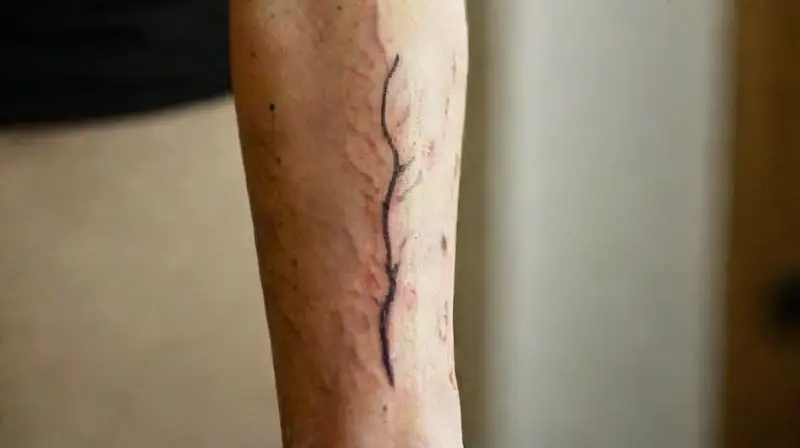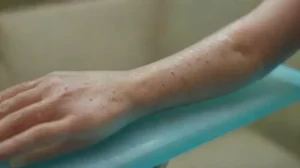Getting a tattoo or a piercing is often accompanied by a mix of excitement and apprehension. Many individuals wonder about the level of discomfort involved in the process and whether pain diminishes over time. Understanding the differences in pain sensations between new and old body art can help prepare those considering their next ink or jewelry placement.
Pain can vary widely depending on several factors, including location, individual pain tolerance, and healing stages. Recognizing how sensation changes from the initial piercing or tattooing to a well-healed piece can make the experience more manageable and less stressful.
Pain in Newly Done Tattoos
Fresh tattoos are known for their intense sting and tenderness. During the healing process, the skin remains inflamed, making the area highly sensitive to touch and external stimuli. This heightened discomfort is typical and expected within the first few days.
The level of pain also depends on placement; areas with thinner skin or closer to bones tend to be more painful. For many, the sensation during this initial phase can feel like an ongoing burning or scratching. Proper aftercare is essential to reduce pain and promote healing.
In addition, the type of ink, needle depth, and artist’s technique can influence how painful the process feels. First-time tattoo recipients may also experience anxiety, which can amplify their perception of discomfort.
Pain in Healed Tattoos
Once the tattoo heals, the sensation in that area generally diminishes significantly. Typically, a healed tattoo feels similar to regular skin with no ongoing pain unless irritated or damaged.
However, some individuals may experience occasional tingling or sensitivity, especially if the tattoo is located over nerve-rich areas. These sensations are usually mild and transient, and in most cases, the tattoo becomes virtually invisible in terms of discomfort.
With age and exposure to the environment, some older tattoos may develop slight changes in texture or color, but pain is usually not associated with these alterations. Proper care can help maintain comfort and appearance over time.
Pain in Newly Pierced Areas

Fresh piercings tend to be quite painful initially, with the highest sensitivity during the first few days. This pain results from the piercing process, which involves breaking the skin barrier and creating a wound.
Swelling and redness are common in the early stages, contributing to ongoing discomfort. The degree of initial pain varies depending on the location and individual pain threshold, with sensitive areas like the nose or cartilage generally feeling more painful.
Following proper aftercare, such as cleaning and avoiding irritants, can help reduce pain and speed up healing. The overall discomfort often subsides within a few weeks, leaving behind a healed, less sensitive piercing.
Pain in Healed Piercings
Once fully healed, most piercings cause very little discomfort unless they are irritated or infected. The area becomes accustomed to the jewelry, and sensation typically returns to normal.
Some individuals may notice occasional soreness or sensitivity, especially after shaving, rubbing, or exposure to harsh conditions. These sensations are generally temporary and manageable with proper care.
Interestingly, older piercings might also become less sensitive over time, but they rarely cause persistent pain. Maintaining good hygiene and being cautious about jewelry fit helps prevent discomfort and complications in healed piercings.
Differences in Pain Between New and Old Tattoos
The key difference in pain perception between new and old tattoos is the acute sting associated with recent tattooing. Fresh tattoos often feel like hot scratches or burning sensations due to skin trauma.
In contrast, older tattoos usually register no pain unless the skin is irritated or damaged. Over time, the nerve endings in the tattooed area become less reactive, making discomfort less noticeable.
Some individuals report a slight itching or mild sensitivity in their older tattoos, especially if exposed to sun or harsh elements. The overall experience of pain diminishes with healing and proper care.
Differences in Pain Between New and Old Piercings

New piercings tend to be significantly more painful due to the fresh wound and tissue disruption. The piercing process itself can cause sharp, stabbing sensations that last for a few seconds to minutes.
With time, the soreness subsides, and the piercing becomes less sensitive. Once healed, the area is generally comfortable, with only occasional mild discomfort in certain situations.
Older piercings might also experience less pain during the healing process because the tissue has adapted and scar tissue has formed. Nevertheless, re-injury or bumping the jewelry can cause temporary discomfort or soreness.
Factors Affecting Pain Severity
Several elements influence how much pain someone experiences during and after tattooing or piercings. The location of the body art, for example, plays a vital role; bony, nerve-rich areas tend to be more sensitive.
The individual’s pain tolerance and psychological state also affect perception. Those feeling anxious or stressed might perceive the sensation as more intense, regardless of the actual discomfort.
Technique and professionalism of the artist or piercer are also crucial in minimizing pain. Using sterile, precise methods can reduce trauma and subsequent pain during healing.
Pain Management and Tips for Comfort
To manage pain effectively, staying hydrated and avoiding caffeine before the procedure can help reduce soreness. Topical anesthetics or numbing agents are sometimes used, but their effectiveness varies.
Applying cold packs or ice after the procedure can alleviate swelling and discomfort. Proper aftercare, including gentle cleaning and avoiding irritants, is essential for minimizing pain and preventing complications.
Finally, adopting a positive mindset and practicing relaxation techniques can help better cope with any initial discomfort. Remember, pain is often temporary, and proper care accelerates the healing process.
Conclusion
In summary, both tattoos and piercings involve different levels of pain depending on whether they are new or old. Fresh body art tends to be more intense due to tissue trauma and inflammation, while healed tattoos and piercings are generally more comfortable and less sensitive.
Understanding these differences allows individuals to prepare mentally and physically for their procedures. Proper aftercare and patience are key to reducing pain and promoting a smooth healing process, ensuring satisfaction with their body modifications over time.







